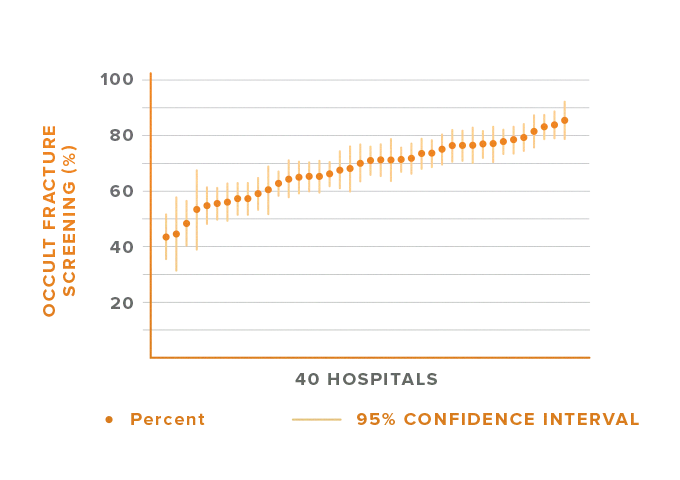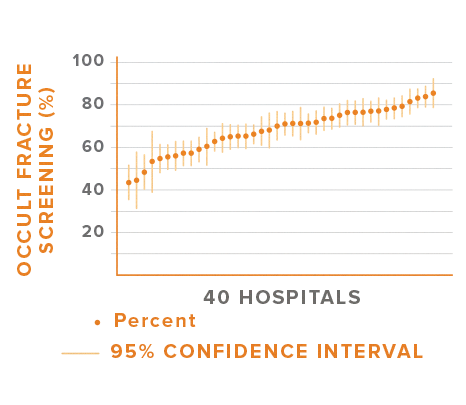Ensuring that Hospitals Adequately Screen for Child Abuse Injuries
Statement of Problem
Every year, more than 120,000 children are confirmed victims of physical abuse in the United States, but the true incidence is likely higher. A major challenge in diagnosing abuse in young children is the fact that many abuse injuries are only discovered via screening imaging, such as X-rays. These type of “hidden injuries,” which could be cracked ribs or brain injury that are only revealed by screening imaging, are called “occult injuries.” Research has shown that the decision to screen is heavily influenced by the socioeconomic and racial background of families and that different hospital systems vary greatly in how often they screen for these occult injuries. This can lead to certain children being over-screened and others under-screened on the basis of social, cultural and socioeconomic factors. A lack of clear criteria on the appropriate use of occult injury screening has hindered efforts to address these disparities and improve the quality of care.
Description
Ensuring Hospitals Adequately Screen for Child Abuse
Ensuring Hospitals Adequately Screen for Child Abuse


Adherence to guidelines for screening for occult fractures in young children diagnosed with physical abuse varied substantially among the 40 pediatric institutions in this study.
This project aims to 1) develop and validate screening guidelines for performing occult injury screening in young injured children, 2) develop a quality metric for assessing how well hospitals screen for occult injuries using administrative data, 3) apply this new algorithm to a large database of pediatric hospitals, and 4) identify factors that promote appropriate use, overuse, and underuse of occult injury screening.
Next Steps
Dr. Wood intends to strengthen the way hospitals measure performance for occult injury screening. By standardizing the approach to screening, she intends to reduce inequities in screening across institutions.
This project page was last updated in May 2019.
Suggested Citation
Children's Hospital of Philadelphia, PolicyLab. Ensuring that Hospitals Adequately Screen for Child Abuse Injuries [Online]. Available at: http://www.policylab.chop.edu [Accessed: plug in date accessed here].
